|
Focke-Wulf Fw 190 A-5/A-8 "Grunherz"

Limited Edition Dual Combo, 1/72 scale
S
u m m a r y |
| Catalogue Number and Price: |
Eduard Kit No. 2122 - Focke-Wulf Fw 190 A-5/A-8 "Grunherz" Limited Edition Dual Combo
USD$49.95 plus shipping available online from Eduard
USD$39.99 plus shipping available online from Squadron
|
| Scale: |
1/72 |
| Contents and Media: |
See descripton below |
| Review Type: |
FirstLook |
| Advantages: |
Superbly moulded and detailed kits, great choice of markings, very thorough instruction booklet , potential to build more models than in the instructions, great presentation. |
| Disadvantages: |
Care will be needed in selection of schemes and parts, but the instruction are very helpful here. I would like to see paint references to other manufacturers but that is a personal gripe. |
| Conclusion: |
This is another brilliant multi-choice kit from Eduard, beautifully moulded, with excellent subject choices and loads f spares for the parts box unless the modeller is adventurous enough to try four-model build using the spares! Definitely recommended to the fan of Luftwaffe fighters in the ‘One True Scale’, especially as the Dual Combo gives you two aircraft at a cheaper price than two individual kits. |
Reviewed by Graham Carter

Eduard's 1/72 scale Fw 190 A-5/A-8 Grunherz Limited Edition Dual Combo
is available online from Squadron.com
Needing no introduction to fans of Luftwaffe fighters, the Kurt Tank designed FW190 first flew in the late 1930’s and went through a few changes to wing shape and size as well as a newer BMW engine before the A-series made it to the front where it proved to be superior in most regards to the RAF’s Spitfire V.
The power of this BMW 801 D-2 (around 1650hp) allowed for greater and greater armament and external weapon carriage, especially after it was moved forward 15cm/6” in the A-5 and A-8 versions. The latter version also had nitrous oxide injection that could boost engine output to close to 2000hp for short periods. These two versions came into service late 1943-early 1944 and were the major production models.
Variations in mg’s, cannons, wings bumps, and fuselage panelling and weaponry led to a bewildering ( to me anyway) variety of aircraft variants and appellations.
A large (38x24x7cm) and strong top-opening box is embellished with a large green heart of JG54 and paintings of two of the options in the kit, and A-5 ‘black 7 + bar’ and A-8 ‘black 11 + wave’ and drawings of all six decal choices are on the side of the box. Inside is a glossy 20-page instruction manual which also shows the painting schemes and the most important sprue charts.
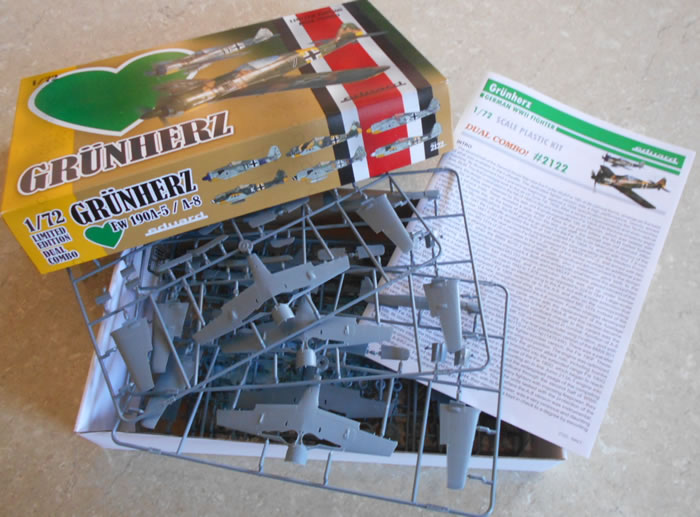
A beautifully printed 180x75mm decal sheet is accompanied by a smaller double sheet of stencils for the two options, as well as two coloured PE frets, and a double set of canopy masks. There are two of Eduard’s spectacular transparency ‘rings’, much of which is not used. Then there is the major cellophane bag containing SIX large sprues which appear to hold parts FOUR aeroplanes since there are FOUR sets of fuselages and wings and numerous other parts, as well as two further large sprues of other parts. Despite appearances, the four fuselage/wing sprues are each different, imperceptibly so in some cases! They are labelled C, G ,J and H and careful examination will reveal variations in fuselage panelling and wing blisters - Eduard have clearly done their research although I am in no position to comment on the accuracy of these.
Here are the four wing/fuselage sprues - have fun spotting the differences between them!
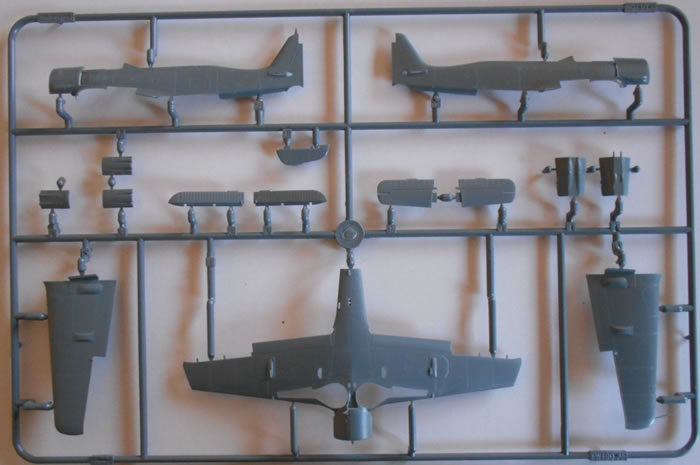
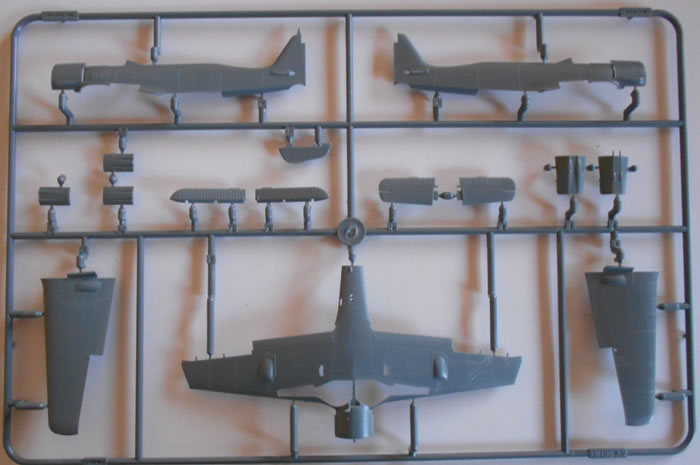
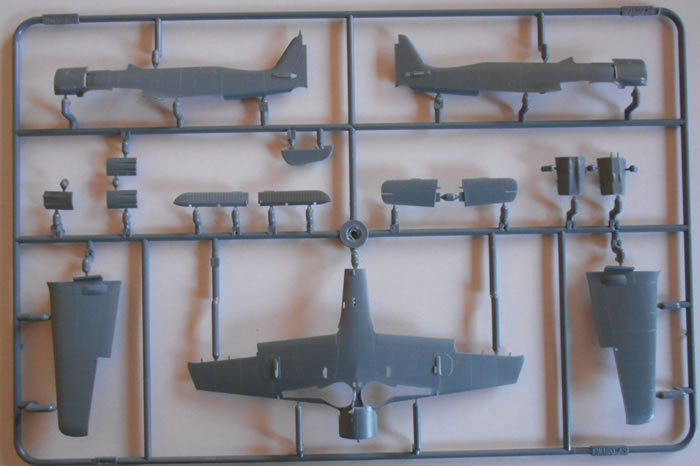
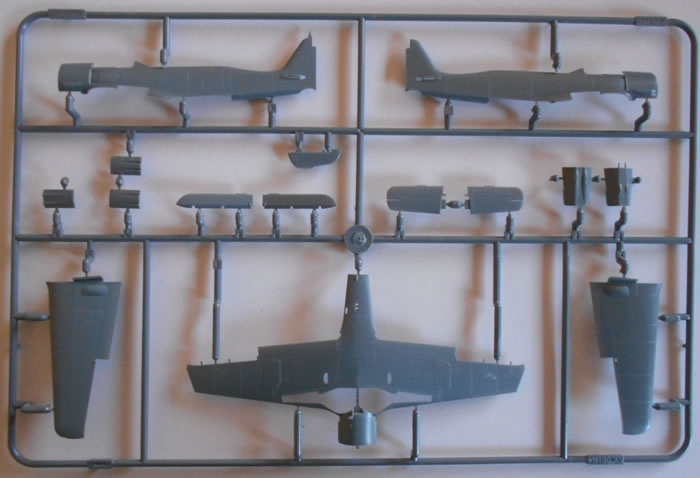
This is why the modeller will have to pay special attention to the instruction booklet - I know that is unnatural, but this time you really have to! There are a lot of variations that need to be sorted out but all is revealed by careful examination of the sprue charts and instructions. There are a lot of unused parts including two sets of fuselage halves, wings and tailplanes, upper front fuselages, propellers, radar aerials, and bombs. I think that the resourceful modeller could produce four different aircraft from this set by adding parts from the spares box - two of the intended ones and two in flying poses - but I leave that up to the adventurous!! Only the fuselage interiors and cowling fronts would need to be found from what I can see.
Eduard have conveniently moulded the fuselage halves in their entirety apart from upper nose inserts to allow for the different gun installations, to alleviate the issues that the early 1/48 kits had with multi-part join-ups. They appear to be the correct 2mm scale length longer than the A-4 model. Those of you would wish to open up the radio panel will find the area deeply scribed on the inside of the fuselage to ease of cutting.
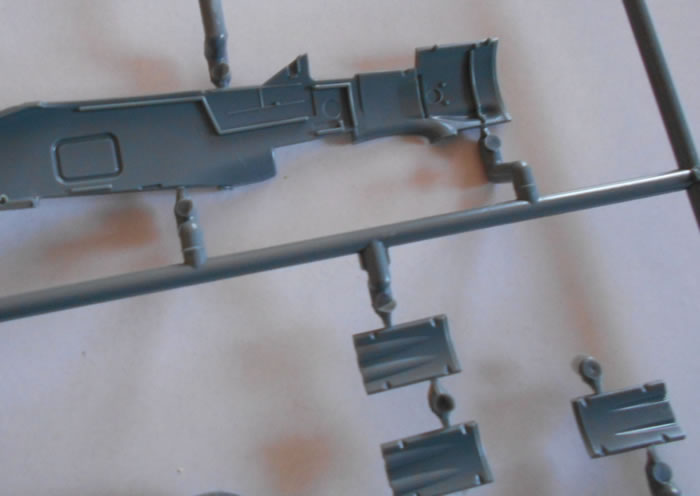
Sprues are moulded in Eduard’s usual dark grey plastic that takes their beautiful scribed detail so well, with gates being suitably fine and in largely unobtrusive spots. My sample revealed very little flash, a poofteenth of a nanometre here and there but it should be easy to scrape off. The use of small ‘reservoirs’ on the tiniest parts mean that no short-moulding is evident. No dimpling occurred on any surface that I could see.
The cockpit area is detailed enough for most of us and includes options for a decal or PE instrument panels, each according to sub-type. Some sanding or detail-removal will be required if you select the PE option. Pre-painted multi-part seat-belts add to the overall effect. Painting instructions are in each step and refer to Gunze paints only.
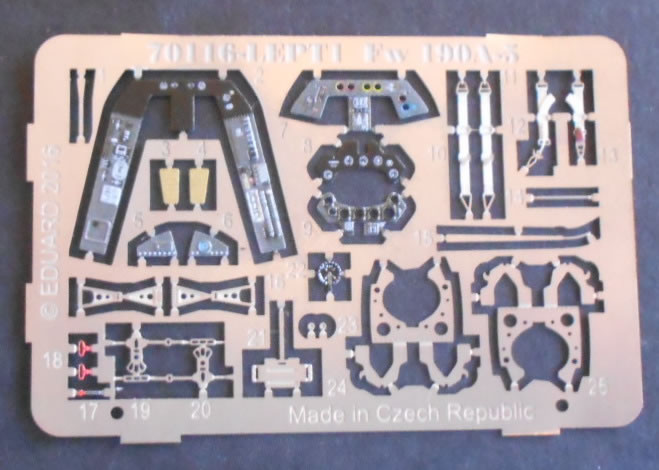
Instructions cover the A-5 variant first and the modeller will need to make early decisions about the style of interior (plastic or PE) and schemes to be built ( different fuselage halves). Later he/she will also need to check carefully for the choice of wings and elevators as these will be determined by the chosen schemes. There are also variations in wheels and tyres, and in the use of a centre-line bomb. Care will be needed attaching the interior parts to the transparent canopy rear, and options are for a closed or open one.
The second part of the booklet covers the A-8 versions and again care will be needed in the selection of parts wherever a different scheme is chosen. Later there are options for the fuel tank and cannon locations so the choice of wings is tied to the schemes.
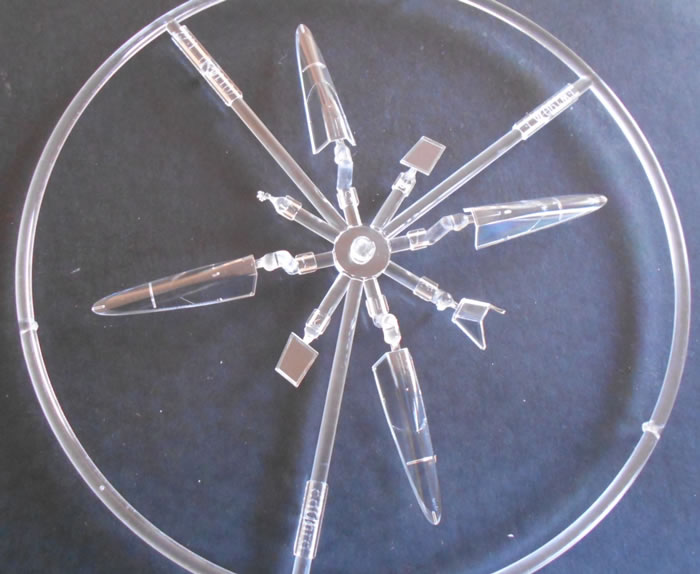
Each option includes information about the use of the canopy masks.
Markings
Finally there are six interesting KG54 ‘Green Heart’ schemes to select from, one of them being the three-colour camouflage used by Lt E Lang over the Soviet Union in mid-1943.
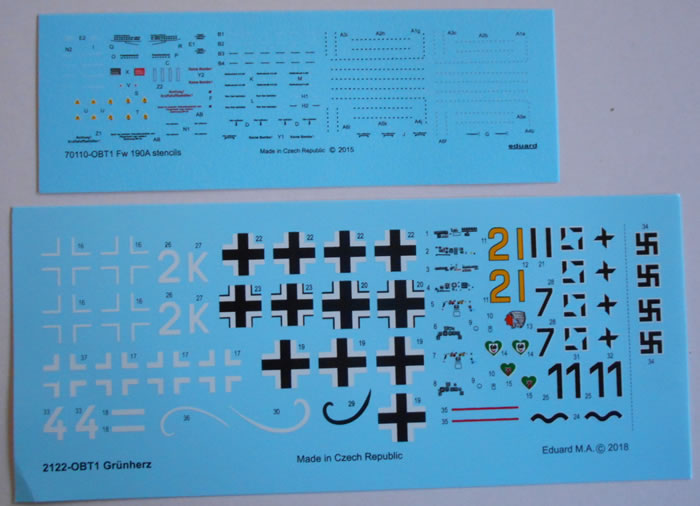
The six decal options are:
Fw 190 A-5
- black 7+-, Lt E.Lang, 5/JG54 Soviet Union mid-1943
- white 4+-, an example from 4/JG54 Finland mid-1944
- white K, an example from 1/JG54 Soviet Union mid-1943
Fw 190 A-8
- black 11+wave ,an example from 14/JG54 Germany late-1944
- yellow 2 +I, an example from 9/JG54 France mid-1944
- white 2 , Uffz J. Handel, IV/JG54 Poland late 1944.
The last page contains detailed information about stencil locations.
This is another brilliant multi-choice kit from Eduard, beautifully moulded, with excellent subject choices and loads f spares for the parts box unless the modeller is adventurous enough to try four-model build using the spares! Definitely recommended to the fan of Luftwaffe fighters in the ‘One True Scale’, especially as the Dual Combo gives you two aircraft at a cheaper price than two individual kits.
Thanks to Eduard for the sample
Review Text Copyright © 2018 by Graham Carter
Page Created 15 May, 2018
Last updated
13 June, 2018
Back to HyperScale Main Page
Back to Reviews Page Woo! |
